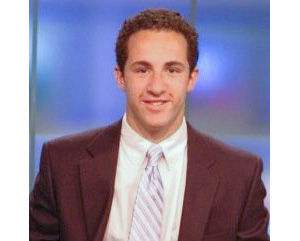Trevor Story’s First Chapter
Published April 14, 2016
Every year, the start of the baseball season provides out-of-the-blue MVPs, shocking collapses from All-Stars, and crazy statistical anomalies. Eight years ago, Detroit Tigers first baseman, Chris Shelton blasted 10 home runs in the month of April. He’d hit just six more the rest of the season, and none after July 2.
After two starts last season, Clayton Kershaw, the best pitcher on the planet, sat 0-1 with a 5.84 ERA after getting shelled in successive starts by the San Diego Padres and Arizona Diamondbacks. Stories of his demise were bigger whiffs than any of the 301 batters he fanned last year. By season’s end, Kershaw put up his usual stellar numbers – 16-7 with a 2.13 ERA and a third-place finish in the Cy Young Award voting.
Shelton and Kershaw represent two of the extremes in early season stats. A fringe player riding an incredible hot streak and an All-Star battling some early season bumps. Which brings us to Trevor Story, the Colorado Rockies rookie shortstop.
ADVERTISEMENT
Story’s story in the minors is a bit of a roller coaster ride. Initially, he showed an intriguing blend of power and speed and was soon being touted as the heir to Troy Tulowitzki in the Mile High City. A couple of down years removed some of his prospect luster, but his numbers rebounded in 2015. Due to Jose Reyes’ ongoing legal troubles, Story was given a shot at winning the starting shortstop role in Spring Training this year. He responded by batting .340 with six home runs over 53 at-bats and hasn’t stopped hitting since.
On Sunday, Story hit his league-leading seventh long ball of the season. That total is the most in MLB history through the first six games of the season. To put it in perspective, Story’s seven slams are more than the total of 16 teams.
In no sport are statistics as analyzed, studied and relied-upon as in baseball. They provide teams a way to scout players (terms such as OBP, BABIP, ISO and UZR aren’t just made-up words – they actually provide teams valuable information), determine optimal lineups and many other benefits. For fans, statistics are a way to link and compare generations of players. Who’s the better centerfielder between Willie Mays and Mike Trout? Check the stats. Where does the aforementioned Kershaw rank among the best pitchers in MLB history? Compare his stats to guys like Sandy Koufax, Nolan Ryan and Randy Johnson.
ADVERTISEMENT
The point is, baseball’s statistics help the game make sense. Each year, fans have a relatively good idea of what to expect. They know that Trout and Bryce Harper are going to put up monster numbers. They know that Kershaw and Parkway Central alum, Max Scherzer, are going to dominate hitters. So when someone like Story comes along, it forces fans to embrace the unknown. Is this guy for real, or is this just two-week mirage?
Think back to the special summer of 2001. A relatively unknown rookie by the name of Albert Pujols made the Cardinals out of Spring Training. He blasted eight home runs in his first month with the club and proceeded to finish the year with 37 homers and 130 RBI to go along with a .329 average. That hot start was the beginning of a Hall of Fame career (we’ll just ignore these Angel years).
Baseball’s long season ensures a player’s true ability will come through – for better or worse. For every Albert Pujols that sustain their initial greatness over a season and a career, there are dozens of Chris Sheltons who burst onto the scene only to fizzle out fast. How the Rockies’ shortstop’s season and career develop remain to be seen. But the first chapter of this Story has been nothing short of incredible.















